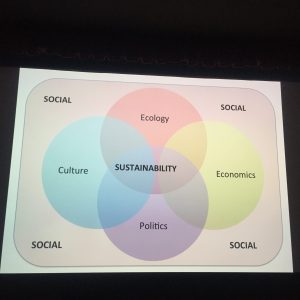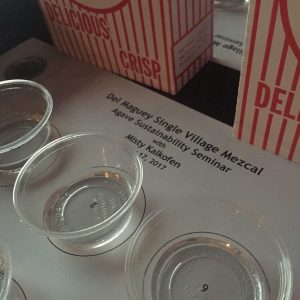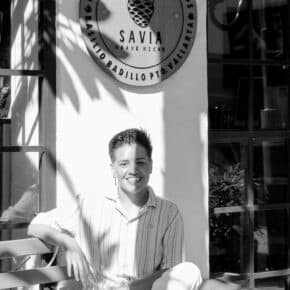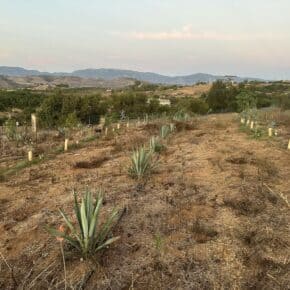Misty Kalkofen, Del Maguey‘s Madrina (godmother) is a big ball of energy when it comes to her passion project – mezcal and sustainability. If you haven’t already checked out the sustainability blog at the Del Maguey website, you should. It is highly significant that the brand that pretty much launched the mezcal category as we know it today has a dedicated space on their website discussing issues impacting the mezcal industry– this is a real issue that the category as a whole must address.
But with that broad declaration, it is also true that trying to define and categorize sustainability is a huge and daunting task, so where to begin? In Del Maguey’s case, it is with a new training seminar for industry people the begins to unwrap this very complicated subject. Clearly there is interest because there was a huge turn out of industry folk (bartenders primarily) at both the San Francisco talk at the Alamo Drafthouse, and the Oakland talk at the Starline. Bartenders are the gateway to the world of mezcal for most people, and having them as educated as possible on the key issues is critical to spreading the gospel of sustainability. Perhaps most importantly, the buying power they hold, and the choices they make in deciding which mezcals to put on the shelves is key in supporting brands that prioritize sustainability.
There is no doubt that mezcal is the “it” spirit. In addition to the constant stream of articles making this declaration, there are also the real numbers that back that up; a 20-30% category growth year over year since 2012. But this increasing demand is putting incredible pressure on an industry that has much to figure out, primarily how to scale now that it has been thrust into the international spotlight. And how to scale sustainably, to look for that sweet spot in the intersecting circles of ecology, economics, politics and culture, all with the issue of social justice in the background is no easy task, and one that Kalkofen takes seriously. 
Much of the talk about sustainability has focused on the agricultural, or ecological side, and the raw materials, i.e. agave, needed to continue its viability; and, with good reason. Mexico is really the cornucopia for agave, Kalkofen delved into that with slides enumerating just how much Mexico contains the greatest variety of Family Agavacea, 251 of 330 species are found in Mexico. And of that 251 species, 150 of which are what we know as agave (others include yucca, et all.) In total, 177 of the species are endemic to Mexico, and therefore the protection in maintaining the diversity is integral to the survival of Agavacea.
The experience of the tequila industry, and reliance on hijuelos (the genetic clones of the mother plant) and monoculture growing style has been a great guide post on what not to do, and how to preserve the genetic diversity found in agave. There is now a greater emphasis on using a mix of seed and hijuelos in growing. There are also commitments to using certified wood in the production process, and there are projects to help deal with the waste water and bagasso that is being created. But to adequately deal with scaling up production, Kalkofen said it is imperative to think 10-15 years out so that fields can be appropriately planned and planted, the labor issues can be resolved, and that infrastructure can be built.
Kalkofen used Vida production as an example. It takes four hornos, 50-60 tinas (fermentation tanks), and nine stills, all operating simultaneously to meet production needs. Contracts are continually renegotiated to account for the fluctuating agave prices, upgrades to facilities, and of course labor costs. All of these factor into what a bottle ultimately costs, and as Kalkofen points out, if you are paying $15 for a bottle of mezcal, someone, if not many, is getting screwed in the process.
Which leads us to the human factor in mezcal production. The mezcal boom has created economic opportunities in the communities where it is made. There is now money for the children of the mezcaleros to continue education beyond high school, and jobs for many who had left the area in pursuit of economic opportunities. This more than anything is the greatest impact of the industry, and now provides communities with the ability to invest in things we often take for granted like libraries, clean water projects, alternative energy (solar panels for one), internet access, and more.

It was great to see such an engaged audience, and hear a lot of tough questions being asked – it is after all the point in pushing for greater transparency in the industry. I continue to remain hopeful that the mezcal industry will not follow in the footsteps of the tequila industry, and that with seminars like these, industry and consumers alike, will pressure brands toward sustainable practices.













Leave a Comment